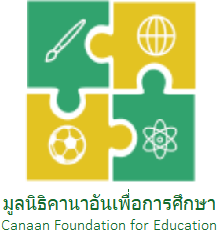The underlying aim is to establish a Community Education Resource Centre, primarily aimed at homeschooling families – but inclusive of anybody keen on the idea of learning or working independently, and we’re even exploring ideas of self-sufficiency (with “smart-farming” or fish farming in your backyard, or even indoors with LED technology and hydroponics).
Besides offering material and resources for school-aged children, we hope to provide a kind of entrepreneurial and incubation program for freelancers. We will focus on the kind of skills that are portable and digital (so that one can work and make a living online, anywhere in the world).
We have a purpose-built studio for voiceover production, with high-end mics and digital recording equipment; and a dedicated “edit station” with all the expensive licensed software for professional-quality video or audio editing (such as Vegas Pro, Sound Forge, Izotope, Xilisoft, Camtasia, etc.)
We also collaborate with a broadcast studio for when someone needs broadcast, industry-standard quality (like an audiobook for Audible, say). Our studio and equipment is open-access 24/7, so working on a project during the night is encouraged!
We’re all basically amateurs, learning as we go. Gary Orman has a professional background in business consultancy (and business systems), video and audio production, and online learning. But we’re also still learning. We have children from 8 years old who are already making youtube videos – just for the fun of it, and just using basic software on a cheap Android phone. But they already understand about getting the lighting right and using an external mic to improve the sound quality. And to edit the video and add sound, music and effects.
For older teenagers and adults, we encourage a professional mindset from the start. The aim is to reach a level of experience and expertise whereby one could ultimately make a living as a (freelance or self-employed) VO artist, youtuber, online tutor or course producer, or even audio or video editor, not to mention web designer or app developer.
We have employed Darrius Serrant, a professional software developer, previously having taught at an international school in Chiang Mai. He will head our Coding Club, providing basic courses in coding for kids but also professional-level workshops for teenagers and adults who want to develop web or phone apps either as freelancers or for direct sale on the Apple App and Google Play stores.
We invested in a Mac Mini for the primary purpose of being able to upload apps to the App Store and manage the commercial aspects of selling apps. The “Apple App Station” can be reserved when needed by Apple App developers to manage and maintain their apps.
Finally, we have a Language Exchange program, primarily for foreigners to learn Thai using the Rapid Method. It’s a mutually advantageous program. Thai people, who are already fairly competent in English, will volunteer to work through the material with the students and the process of explaining the concepts and socializing in English will help them to gain fluency in idiomatic English, in an enjoyable, relaxed and non-academic way.
As we are still at the early stages, there’s plenty of room for exploration and ideas – much of which will depend on who will join us as volunteers and/or entrepreneurial “students”.
More than just a “co-working space”: a kind of Mastermind group where each member has experience and expertise that can be shared with the others – in return for advice and guidance for one’s own business. I’m particularly looking for people with marketing and copywriting know-how (an essential component in any business venture) and financial/investing/planning expertise. Entrepreneurs tend to have good ideas for a product or service, but have little idea about how to market it, finance it, create a business/supply/distribution system or deal with customer services and after-sales maintenance issues. I hope that we can fill in those (huge) gaps.
Ultimately, we hope to devise a kind of blueprint for “real world” self-education. Even though we are still very small, Canaan Foundation could become a functioning model of a concept known as “co-learning”.
Essentially, this is the notion that we get together as learners not as teachers. The traditional role of “teachers” has become redundant. Their role should be primarily to help find resources and manage them; and perhaps to act as coaches and facilitators in how to go about learning and obtaining information (teaching how to learn and think and analyze, rather than teaching a particular subject). The main learner is the child (or adult) who is pursuing a particular line of enquiry (e.g. becoming a software developer or establishing an online business) – the other members of the learning group are ultimately there to support the learner – who ultimately will become the expert in his/her specific field. So who are we to “teach” something that will never be our specialty anyway?)
These learner/coach/expert roles overlap. The main difference from other forms of teaching or education is that the student (the learner) is the one in charge of his/her education, while the rest of us are kind of relegated to a supportive role. In turn, we are the student for our own endeavors and seek out the support of the others in the group or community. (That’s why it’s called “co-learning”.)

